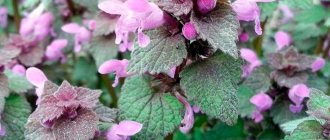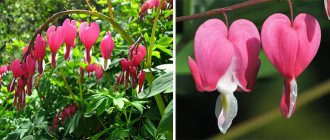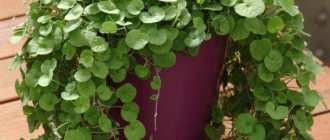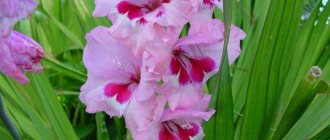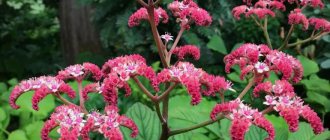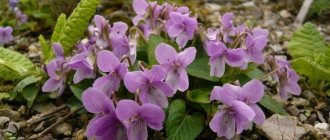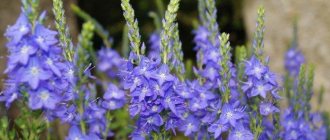general information
Among hundreds of species there are evergreen and deciduous. There are completely dwarf creeping varieties, and there are tall giants. Most of them are heat-loving, but some are still able to withstand severe frosts.
The tallest and most spreading trees stretch up to 10 m. Most often, bushes up to 3-5 cm in diameter are found, and species up to 1.5-2 m are considered miniature. Creeping varieties are classified separately. By the way, they are good for green hedges and arches.
Euonymus is a flowering plant that blooms towards the end of spring. Its buds are not very noticeable, unlike the colorful leaves, which by autumn collect all shades from yellow to purple. In addition, long earrings, which also gradually change shade, look unusual. Keep in mind that euonymus is a poisonous plant.
Photo: sadogorod25.ru
Plant cultivation
In Russia there are many folk names given by the compilers of dictionaries. The etymology of the word remains unclear; M. Vasmer points out that the reconstruction of the ancient form is difficult for researchers and it is impossible to reach it.
This proves that for many centuries trees and shrubs grew not only in the wild, but were also used by humans in the beginnings of landscape design and land surveying.
Types of euonymus
In our latitudes, only two species are common - European and warty. But we will tell you about a few more quite popular ones!
European euonymus
There are two main subspecies of this euonymus - shrubby and tree-like. The tree, depending on the conditions of the region, can grow up to 8 m. Frost resistance is average.
Photo: pinterest.com
Warty euonymus
A medium-sized shrub up to 1.5 m is notable for its very slow growth and high frost resistance. Despite its not very romantic name, it is surprisingly decorative. The shoots become overgrown with characteristic thickenings.
Photo: stroyremned.ru
Broadleaf euonymus
This is a tall shrub up to 5 m with abundant flowering and a pungent aroma. But this species is more often grown for medicinal purposes. Therefore, it is not so in demand among gardeners and landscape designers.
Photo: flower.onego.ru
Euonymus Fortune
And again frost-resistant, and also very decorative. This is a very compact Chinese euonymus in the form of a variegated creeping shrub up to 50 cm.
Photo: ozon.ru
Great-winged euonymus
A tall tree-like shrub grows well in the shade. But still, in sunny areas it is much more beautiful, and is grown mainly in the form of single plantings.
Photo: stroyremned.ru
Japanese euonymus
A heat-loving species that does not tolerate temperatures below +5 degrees. But the good news is that it winters well indoors or in a covered greenhouse. Therefore, it is mainly grown in tubs.
Photo: vivaiocipolloni.it
Dwarf euonymus
It is easily distinguished by its atypical narrow lanceolate leaves with curved tips. It grows up to 1 m in height, but quickly expands in width and covers entire areas.
Photo: sadik.tomsk.ru
Celosia (60 photos): types, planting and proper care
Watering
In summer, euonymus should be watered abundantly . But don't fill it up!
It is very important to organize good drainage at the stage of planting the shrub in a pot so that water does not stagnate at its roots.
The lower the air temperature, the less water is required.
In winter, watering should be moderate. But the soil around the plant should always be moist !
For irrigation, only settled water should be used. The water should stand for at least a day.
Despite the fact that the plant is not picky about humidity, dwarf euonymus should be sprayed regularly. This definitely won’t make things worse, and pests are removed very effectively with this treatment of the bush.
Euonymus care
Euonymus has rather banal and restrained requirements. A little moderation in everything - and it will grow well and delight you with its beauty!
Temperature
The ideal summer temperature for euonymus is about 20 degrees. For indoor flowerpots in winter it needs to be lowered to 6-12 degrees so that the plant gains strength by spring.
Photo: distano.ru
Lighting
The light should be bright, but diffused, because aggressive direct rays can leave burns and affect the color of the leaves. Light requirements may vary between varieties.
Photo: idoom.ru
Watering
In summer, you will definitely need abundant watering and regular spraying, because dry soil and dry air are the first causes of leaf loss. But in winter, euonymus hardly needs additional moisture at all.
Photo: pinterest.com
The soil
Any soil is suitable, but it must be light and loose. It is good to use leaf soil with turf and organic matter, and also add peat and sand.
Photo: dimgou.ru
Fertilizers and fertilizing
Euonymus reacts sensitively to feeding. Moreover, in this case, you can safely alternate mineral complexes and organic matter with an interval of 1-2 weeks.
Photo: olalastudio.ru
Trimming
The bush is pruned for decorative purposes to create a neat and well-groomed crown. In addition, for branching in the spring, fresh shoots must be pinched.
Photo: cemicvet.mediasole.ru
Wintering
This applies to outdoor plants that will remain directly in the garden. Winter-hardy species do not require additional care and tolerate even -25 degrees in the snow. If the branches are partially frozen, they will recover over the season.
Photo: speakingflower.ru
Transfer
And this point applies to indoor and potted plants. Decorative euonymus gradually depletes the soil, so it is recommended that even mature, slow-growing bushes be replanted once every 2-3 years.
Photo: idoom.ru
Lilies of the valley (50 photos): types, planting and proper care
Reproduction and planting of euonymus
Colored and variegated varieties are propagated only vegetatively in order to preserve their characteristics. Garden plants are easiest to propagate by layering. Just bend the low shoots to the ground in a groove, secure with staples, dig in, leaving only the top, and wait. Once the roots appear, they can be separated and replanted.
Cuttings are a universal method for both potted and outdoor plants. At the beginning of summer, cut apical cuttings of about 7 cm with an internode, treat them with a stimulant and root them in peat with sand under a film. They can be transplanted in 2 months.
At the beginning of the season, root children with roots about 30 cm long can be separated from the main plant. They are simply immediately transplanted to a permanent place. And dwarf species with abundant root shoots can be propagated completely painlessly by dividing the rhizomes.
Photo: idoom.ru
Pest and disease control
Spider mites, mealybugs and codling moths are especially dangerous. Less commonly, red mites, scale insects and moths settle on trees. All of them spoil and destroy leaves, but complex insecticides help against all of them.
Drying of branches and necrosis of the bark most often occurs due to a fungal infection. The second most common fungus is ascochyta blight, as a result of which the leaves become covered with brown spots that gradually lighten. You need to get rid of the affected parts of the plant, and then treat everything with Bordeaux mixture.
Photo: fb.ru
Yasnotka (60 photos): types, planting and proper care
Preparing for winter
When entering a dormant state in the fall, preliminary pruning of old branches and formation of the crown are carried out. Under no circumstances should you throw them away. It is important to correctly integrate them into the shelter along with fallen leaves. It is better not to leave last year’s mulch, but to transfer it to the compost, adding new mulch. The thickness of the mulch layer should be a little more than 10 cm. Then it should be covered with three layers of non-woven material like agrofibre. The composition is completed by tying with twine and fixing with spruce branches. Good winter hardiness is ensured.
This is where the description of the strange culture comes to an end. Those who have read the article now know everything about the main features of the life of this wonderful shrub: where the euonymus grows, how to plant it, especially after purchase, as well as care.
Euonymus – photo
The euonymus is so spectacular that it is impossible to deny yourself the pleasure of admiring it. So don't refuse!
Photo: it.wow-plants.com
Photo: prorastet.ru
Photo: vsevdom.net
Photo: domashniecvety.ru
Photo: pinterest.ru
Photo: mykaleidoscope.ru
Photo: spb.tiu.ru
Photo: en.wikipedia.org
Photo: domashniecvety.ru
Photo: gazon7777.ru
Photo: stroy-podskazka.ru
Photo: ogorodnik24.ru
Photo: my-farmer.ru
Photo: jalita.com
Photo: alleyann.ru
Photo: energysad.ru
Photo: e-semena.ru
Photo: stylishgarden.ru
Photo: idoom.ru
Photo: alexbego.ru
Photo: regionoperator.ru
Photo: princely-garden.ru
Photo: ceneo.pl
Did you like the post? Subscribe to our channel in Yandex.Zen, it really helps us in our development!

